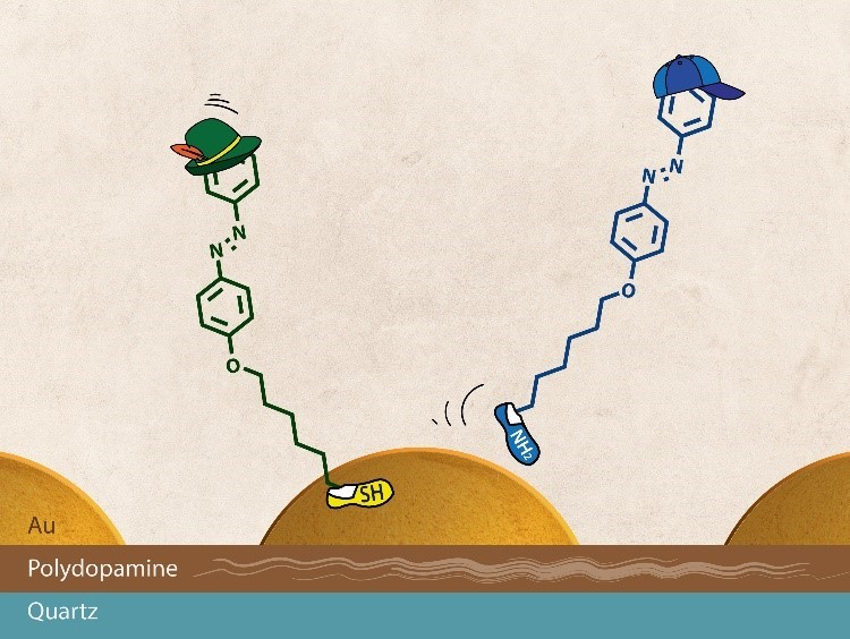Molecular photoswitches, such as azobenzenes, can help to control phenomena at interfaces with light as an external stimulus. Self-assembled monolayers of molecular switches on macroscopic gold surfaces are generally used as model systems for this effect. However, there are disadvantages to these systems that limit their use: The formation of highly crowded molecular layers can sterically hinder the switching process, and replacing molecules within this surface layer can be challenging.
Gábor London, Research Centre for Natural Sciences, Budapest, Hungary, and colleagues have covered a macroscopic surface in nanoparticles to provide a way around these limitations. The team assembled gold nanoparticle arrays on a quartz surface. They used a layer of polydopamine (PDA), a synthetic polymer inspired by mussel adhesives, to connect the two materials. The PDA layer was prepared by a simple aerobic autopolymerization of dopamine hydrochloride. PDA contains catecholic units that can reduce gold cations to form nanoparticles without any additional reducing or capping agents.
The gold particles on the PDA layer ensure that there is enough space for the photoisomerization of azobenzenes bound to Au. The nanoparticle array can also facilitate the ligand exchange process between differently substituted molecular switches (pictured). Given the universal “sticky” nature of PDA, such photoswitchable surfaces could be prepared on almost any material to control wetting, recognition, or adhesion processes.
- Photoswitchable Macroscopic Solid Surfaces Based On Azobenzene‐Functionalized Polydopamine/Gold Nanoparticle Composite Materials: Formation, Isomerization and Ligand Exchange,
Attila Kunfi, Rita Bernadett Vlocskó, Zsófia Keresztes, Miklós Mohai, Imre Bertóti, Ágnes Ábrahám, Éva Kiss, Gábor London,
ChemPlusChem 2020.
https://doi.org/10.1002/cplu.201900674

![Synthesis of [c2]Daisy Chains via Mechanochemistry](https://www.chemistryviews.org/wp-content/uploads/2025/04/202504_RotaxanesWithSolidStateMechanochemistry-125x94.png)

